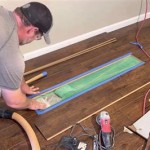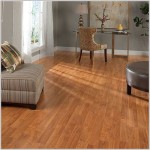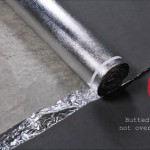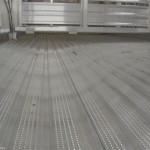Door Threshold Strips: A Comprehensive Guide for Laminate Flooring
Door threshold strips, also known as transition strips, are essential components in laminate flooring installations. They serve a critical function in bridging gaps between different flooring materials or compensating for variations in floor height, while simultaneously providing a finished, aesthetically pleasing appearance. This article explores the various aspects of door threshold strips specifically designed for laminate flooring, encompassing their purpose, types, selection criteria, installation techniques, and maintenance considerations.
Purpose and Function of Door Threshold Strips
The primary purpose of door threshold strips is to provide a seamless transition between two adjacent floor coverings. These can be different types of flooring, such as laminate to carpet, laminate to tile, or laminate to vinyl. They can also bridge expansion gaps, which are crucial for allowing laminate flooring to expand and contract with changes in temperature and humidity. Without appropriate transition strips, these expansion gaps would be exposed, detracting from the overall appearance and potentially causing damage to the flooring. Furthermore, threshold strips can address height differences between floors, preventing tripping hazards and ensuring accessibility. They also offer protection to the edges of the laminate flooring, shielding them from chipping or damage due to foot traffic or cleaning equipment.
Types of Door Threshold Strips for Laminate Flooring
A variety of door threshold strips cater to different flooring scenarios and aesthetic preferences. Understanding these types is critical for selecting the appropriate strip for a specific application.
T-Molding: This type of threshold strip is designed to join two floors of equal height. It features a T-shaped profile, with the top portion covering the gap between the floors and the legs secured beneath the edges of the flooring. T-moldings are commonly used to transition between two sections of laminate flooring or between laminate and other types of flooring that are at the same level.
Reducer Strip: Reducer strips are used to bridge the gap between floors of different heights. They have a sloped profile that gradually transitions from the higher floor to the lower floor. This type of strip is often employed when transitioning from laminate flooring to a thinner flooring material, such as vinyl or tile.
End Cap or Square Edge: End caps are designed to provide a finished edge where the laminate flooring terminates, such as at a doorway or against a wall. These strips have a flat, square profile and are often used in conjunction with other types of threshold strips to create a complete and aesthetically pleasing transition.
Overlap Reducer: An overlap reducer is similar to a reducer strip but features an overlapping edge that covers the edge of the higher flooring material. This type of strip is often used when the height difference between the two floors is significant.
Multi-Transition Strips: These versatile strips can be used to transition between floors of varying heights and materials. They often feature adjustable profiles that can be customized to fit the specific application. Some multi-transition strips come with separate tracks that are installed first, and then the strip snaps into place.
Carpet Transition: These strips are specifically designed to transition between laminate flooring and carpeting. They typically have a toothed or grooved edge that grips the carpet fibers, providing a secure and seamless transition.
Threshold strips are generally available in various materials, including aluminum, wood, laminate, and vinyl. Aluminum strips are durable and resistant to wear and tear, making them a good choice for high-traffic areas. Wood strips offer a more traditional and natural look and can be stained or painted to match the flooring. Laminate strips provide a seamless match to laminate flooring. Vinyl strips are a cost-effective and water-resistant option, suitable for bathrooms and kitchens.
Selection Criteria for Door Threshold Strips
Selecting the appropriate door threshold strip requires careful consideration of several factors to ensure a functional and aesthetically pleasing result.
Floor Height Difference: The height difference between the two floors is a critical factor in determining the type of threshold strip needed. Reducer strips or overlap reducers are necessary when there is a significant height difference, while T-moldings are suitable for floors of equal height.
Flooring Material: The type of flooring material being transitioned to is another important consideration. Carpet transitions are designed specifically for carpet, while other types of strips can be used to transition to tile, vinyl, or other laminate flooring.
Aesthetic Preferences: The appearance of the threshold strip should complement the flooring and the overall design of the room. Consider the color, finish, and material of the strip to ensure a cohesive look.
Durability and Traffic: In high-traffic areas, choose a durable threshold strip made of aluminum or a high-quality laminate. For areas with less traffic, a vinyl or wood strip may be sufficient.
Installation Method: Consider the ease of installation when selecting a threshold strip. Some strips are designed for easy snap-in installation, while others require more intricate installation techniques.
Subfloor Type: The subfloor material (wood, concrete, etc.) will influence the type of adhesive or fasteners needed for installation. Ensure the chosen threshold strip is compatible with the subfloor.
Moisture Resistance: For areas prone to moisture, such as bathrooms and kitchens, choose a water-resistant material like vinyl or aluminum.
Installation Techniques for Door Threshold Strips
Proper installation is crucial for ensuring the functionality and longevity of door threshold strips. The precise installation process will vary depending on the type of strip and the specific application, but the following general guidelines apply:
Preparation: Before installation, ensure the subfloor is clean, level, and free of debris. Measure the width of the doorway or opening where the threshold strip will be installed. Cut the threshold strip to the appropriate length using a saw or other suitable cutting tool. It's best to measure twice and cut once.
Adhesive Application: Apply a bead of construction adhesive to the subfloor where the threshold strip will be placed. Follow the manufacturer's instructions for the recommended adhesive type and application method. For strips that require screws, pre-drill pilot holes as needed.
Placement and Securing: Carefully position the threshold strip over the adhesive or pilot holes. Ensure the strip is properly aligned and covers the gap between the flooring materials. Press the strip firmly into the adhesive or secure it with screws. If using an overlap reducer, ensure the overlapping edge covers the edge of the higher flooring material.
Cleaning and Finishing: After installation, remove any excess adhesive with a damp cloth. If necessary, use a caulk gun to apply a bead of sealant along the edges of the threshold strip to create a watertight seal. Allow the adhesive to dry completely before allowing foot traffic on the area.
Specific Instructions: Always refer to the manufacturer's instructions for specific installation guidelines for the chosen threshold strip. Some strips may require specialized tools or techniques.
Expansion Gaps: When installing threshold strips over expansion gaps, ensure that the strip allows for movement of the flooring. Do not apply adhesive or screws directly over the expansion gap.
Leveling: If there are slight height variations, shims can be used under the threshold strip to create a level transition.
Securing the Strip: Depending on the type of threshold strip and the subfloor, different methods can be used to secure the strip. These methods include using adhesive, screws, nails, or a combination of these. Choose the appropriate method based on the specific requirements of the installation.
Maintenance and Care of Door Threshold Strips
Proper maintenance is essential for preserving the appearance and functionality of door threshold strips. Regular cleaning and occasional repairs can extend the lifespan of the strips and ensure they continue to provide a seamless and safe transition between flooring materials.
Regular Cleaning: Clean threshold strips regularly with a damp cloth and mild detergent. Avoid using harsh chemicals or abrasive cleaners, as these can damage the finish. For stubborn stains, use a specialized cleaner designed for the specific material of the strip.
Protecting from Scratches: To prevent scratches and scuffs, avoid dragging heavy objects across the threshold strips. Consider using floor protectors under furniture legs and other heavy items.
Repairing Damage: If a threshold strip becomes damaged, such as chipped or cracked, it should be repaired or replaced promptly. Small chips can be repaired with a color-matched filler. For more extensive damage, it may be necessary to replace the entire strip.
Checking for Loose Strips: Periodically check the threshold strips to ensure they are securely attached to the subfloor. If a strip becomes loose, reapply adhesive or tighten the screws as needed.
Preventing Moisture Damage: For threshold strips in areas prone to moisture, such as bathrooms and kitchens, ensure the sealant is intact and replace it as needed. Wipe up spills promptly to prevent water damage.
Material-Specific Care: Different materials require different types of care. For example, wood threshold strips may need to be refinished periodically to maintain their appearance. Aluminum strips can be cleaned with a metal polish to remove tarnish.
By following these maintenance and care guidelines, you can ensure that your door threshold strips remain in good condition and continue to provide a safe and aesthetically pleasing transition between flooring materials for years to come.

Door Threshold Strips Solutions A Trim For Every Location

Order Laminate Door Thresholds With Free Easy To Install Strips Trims For All Types Of Flooring

Laminate Wood Flooring Threshold Strip End Profile Bf

Extra Wide Door Threshold Bars 55mm For Those Tricky Gaps

Door Bars Threshold Strip Transition Trim Tiles To Laminate Carpet 50mm X 900mm

Solid Mdf Laminate Wood Flooring Strip T Bar British

80mm Wide Self Adhesive Aluminium Wood Effect Transition Strip Carpet Cover Door Floor Threshold Safety

Buy Polished Brass From Srd

Pvc Floor Divider Strip Self Adhesive Threshold Trim Flat Laminate Flooring Edge 78 7 1 97 Joining Gap Cover Strips Door Bottom Seal Bars By Eauty Com

Self Adhesive Floor Board Edge Strip Seal Line Pvc Flat Door Threshold
Related Posts








